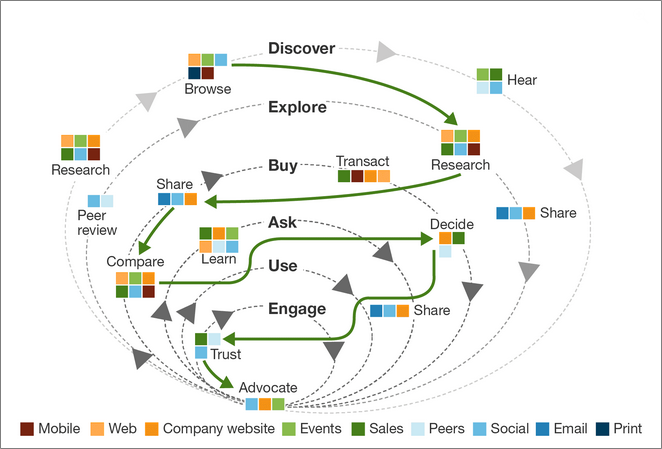Inbound Marketing for Manufacturers: Leveraging Sales Team Support
Many manufacturers with smaller marketing departments prioritize sales support: creating sales collateral, helping with trade shows, developing...
3 min read
 Amanda Weldon
:
March 09, 2022
Amanda Weldon
:
March 09, 2022
You’ve likely heard, “it’s not about you,” but have you heard this in the context of your brand messaging? The foundation of good brand messaging is understanding your audience, making them the hero, and establishing trust. Creating messaging that is focused solely on you, your credentials, and your competition means that the most important factor is missed - who you’re trying to attract.
Perhaps the single most important part of developing your brand and website messaging is understanding your audience. Without an understanding of who you are trying to reach, how can you reach them? If your company has not explored persona development, that’s a good place to start. As HubSpot says, “The strongest buyer personas are based on market research as well as insights you gather from your actual customer base (through surveys, interviews, etc.).” It can be a bit overwhelming at first, so start with identifying the top two target personas and who you have access to that fits the bill (knowing there may be many more personas but you have to start somewhere). The exercise of building the personas will give you insight into what makes your audience tick, which helps you write better content to match their wants, needs, fears, problems, etc.
Now that we’ve established who the hero is – the customer – it’s important to understand the why. “When we position our customer as the hero and ourselves as their guide, we will be recognized as a sought-after character to help them along their journey,” said Donald Miller, CEO of StoryBrand.
Trust is what comes to mind when reading this statement from Miller. According to the Edelman Trust Barometer, brand trust ranks among the top five buying considerations when today's consumers make purchases. Would you let someone guide you, anywhere, without trusting them? Probably not. So, developing this brand trust is an important part of using the StoryBrand methodology and using it successfully.
In order for your audience to trust you, there are a few things that need to take place. First, they have to know that you understand the problem(s) they are trying to solve.
Think about your own buying (or research) patterns for events such as finding a dentist, buying a new bed, searching for a gym, etc. These can all be traced back to trying to solve a problem. The problem – being a toothache, comfort or lack of rest, being healthy, etc. – the reason you’re searching is to try to solve this problem. You can apply this same sentiment to your audience, brand, and website.
Some key ways you can incorporate trust-building into your marketing and brand strategy include:
With only 47% of brands seen as trustworthy in 2021, according to a Havas Media Group survey, there’s a lot of work to be done.
Once you have identified your target personas, discovered what problems they have, how you can solve them, and ways to show trust, the next step is to act. With the majority of brand research conducted online, your website is arguably one of the best places to start.
First, ask yourself ‘who is the hero currently on my website?’. If you answered ‘it’s me (my company)’ that’s a good indication of needing an overall brand and website messaging strategy based on the pillars of identifying and understanding your audience and making them the hero via the StoryBrand method.

Many manufacturers with smaller marketing departments prioritize sales support: creating sales collateral, helping with trade shows, developing...
Company blogs are an essential part of modern day marketing and brand journalism. I think most organizations realize this by now, but what remains a...

Your website should work as hard as you do to earn new business. And the best thing about a great website is that it can do it day or night, without...